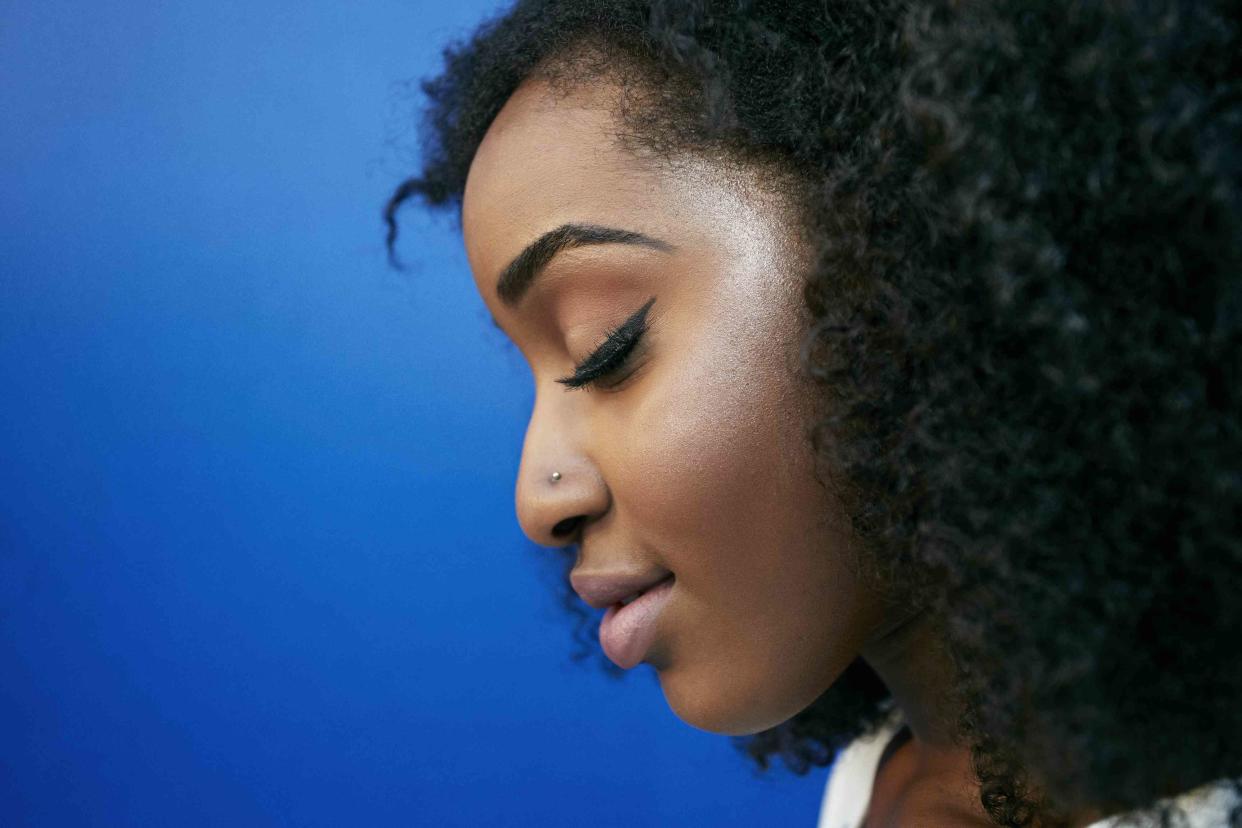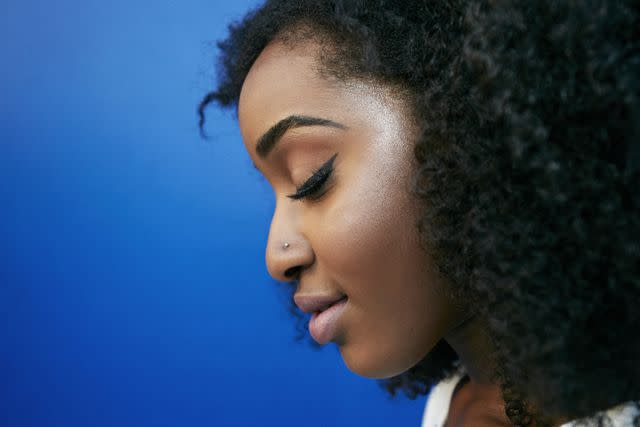Causes of a Nose Piercing Bump and How to Get Rid of It

Peter Griffith / Getty Images
Medically reviewed by Susan Bard, MD
A bump on or in the nose after a nose piercing can have many causes, including granulomas, infection, or scarring. Keloids and hypertrophic scars can form as the injury from the piercing heals. These bumps are rarely dangerous, but they can be bothersome.
This article will discuss the symptoms and possible causes of nose piercing bumps, available treatments, and when to see a healthcare provider.

Peter Griffith / Getty Images
What a Nose Piercing Bump Looks Like
The way a nose-piercing bump looks depends on what's causing it.
A pyogenic granuloma may:
Be a pink, red, or purple papule (raised area on the skin) or nodule (growth of abnormal tissue)
Grow outward instead of under the skin
Be painless
Be "fleshy"
Be about 5–10 millimeters in diameter
Bleed easily with minor trauma
A single pustule by the piercing may be:
Small and slightly elevated
Red and inflamed
Filled with pus and/or blood
Tender, itchy, burning, or painless
Part of a recurring cycle in which it goes away and returns
A keloid may be:
A round, rigid nodule that extends past the borders of the piercing hole
Flesh-colored (or slightly darker than your usual skin tone), pink, or red
Lumpy or ridged
Tender
Itchy
Painful (or have other unusual sensations)
As small as a pimple to as large as a football
A hypertrophic scar may cause a bump that is:
Rigid
Pink to red
Flat or slightly raised
Itchy or uncomfortable
Confined within the boundaries of the piercing wound
Causes of a Nose Piercing Bump
Causes of a bump after a nose piercing include:
Pyogenic granuloma
Pustule
Keloid
Hypertrophic scar
These are outlined in more detail below.
Pyogenic Granuloma
A pyogenic granuloma, also called a granuloma gravidarum, is a proliferation (grouping) of blood vessels that form a benign tumor originating from the skin or mucous membranes.
They are commonly found in the oral and nasal cavities and can arise from traumas such as nose piercing.
They can also form as a response to infection. Improper piercing technique, use of unsterile instruments, and inadequate aftercare can raise the risk of infection after a nose piercing.
Pustule
A minor infection can cause a small pus-filled bump to appear at the site of the piercing. If popped, pus or blood may ooze out. The pustule may refill after it drains.
If the infection persists or gets worse, it should be seen by a healthcare provider.
Keloid
A keloid is a type of scar that forms as a result of an impaired inflammatory response to a skin injury, such as a body piercing. Keloids are commonly associated with ear piercings but can also form after other body piercings, like nasal piercing.
A keloid can take up to a year after the initial skin trauma to appear. Keloids grow larger than the original wound and can feel itchy or painful as they grow. They do not go away on their own.
Keloids can run in families and are more common in people with darker skin tones.
Hypertrophic Scar
Like a keloid, a hypertrophic scar is a raised scar that results from an excess of tissue produced after a skin injury, like a piercing.
Hypertrophic scars typically start to grow within weeks after the trauma to the skin and don't grow beyond the boundaries of the initial injury.
Hypertrophic scars grow rapidly for about six months, then regress gradually.
Unlike keloids, hypertrophic scars commonly occur across people of all skin tones.
How to Get Rid of a Nose Piercing Bump
Treatment for a nose piercing bump varies depending on the cause of the bump.
Treatment For Pyogenic Granuloma
Treatment for a pyogenic granuloma may include:
Replacing the piercing with one made of another material, such as titanium, gold, or a medical silicone piercer
Removal of the piercing
Topical treatments, such as imiquimod cream, 5% timolol gel 0.5%, or other beta-blockers
Intralesional (injected into the lesion) steroid injection
Cryotherapy (using extreme cold to remove tissue)
Curettage and cautery (electrosurgery in which the lesion is scraped off, followed by the application of heat)
Surgical excision (removal of tissue using a scalpel or cutting instrument)
Laser treatment
Application of silver nitrate (a chemical applied to the granuloma to dry it or burn it off)
Treatment For a Pustule
A pustule from a minor infection can often be treated at home with measures such as:
Applying warm saline soaks or hot compresses several times daily (continue daily for two weeks after the pustule has gone away)
Topical antibiotics
If the pustule does not go away or keeps coming back, or if the infection worsens, see your healthcare provider to determine the best course of treatment.
Treatment For Keloids and Hypertrophic Scars
Hypertrophic scars may improve on their own with time, but this could take a year or longer. Keloid scars do not resolve without treatment.
The treatments available for keloids and hypertrophic scars are similar, but there is no single definite treatment for either type of scar, and they might respond differently to the same treatment. Multiple treatments may be used together.
Treatments for keloids and hypertrophic scars may include:
Pressure therapy: A type of pressure appliance, such as a pressure earring, is worn over the scar day and night for up to four to six months
Steroid injections: A corticosteroid is injected directly into the scar to help reduce the size of the scar, soften the scar tissue, and ease symptoms such as itching and redness
Silicone dioxide: Applied as a gel sheet (or sometimes ointment), worn every day, for up to several months. It can be used to help reduce the size and ease symptoms of a current scar or be applied after skin injury (such as surgery) to help prevent a raised scar from forming
Cryotherapy: Reduces the scar by freezing the scar tissue
5-FU or bleomycin injections: Chemotherapy medications injected directly into the scar
Laser and light treatments: Includes treatments such as pulse dye laser, which can help smooth and/or flatten a scar and lighten the color of the scar
Surgery: The scar is surgically cut out. This is a last resort because scars often recur, and new, larger keloids can form
Radiation: Rarely used out of concern for an increased risk of cancer development
Can You Prevent Nose Piercing Bumps?
To help minimize your chances of getting a nose piercing bump, avoid trauma and friction to your piercing that can arise from:
Vigorous or overcleaning
Rubbing from clothing
Playing with the jewelry
Excessive motion of the area
This can interfere with healing and contribute to the formation of excess scar tissue.
Are There Tests to Diagnose the Cause of a Nose Piercing Bump?
A dermatologist or healthcare provider can usually diagnose pyogenic granulomas, pustules, keloids, and hypertrophic scars through a physical examination. Sometimes, the healthcare provider may perform a skin biopsy to rule out other skin conditions.
To perform a skin biopsy, the healthcare provider will numb the area and remove a small amount of skin to examine under a microscope. This procedure usually takes place in-office while the patient is conscious.
When to See a Healthcare Provider
Nose piercing bumps aren't usually dangerous, but see your healthcare provider if:
You show signs of infection
You have symptoms that are new or concerning (such as bleeding)
You have a bump and want to have it removed or reduced
The bump has been treated and is showing signs of coming back
You have any questions or concerns
Summary
Causes for nose piercing bumps may include pyogenic granuloma, pustule, keloid, and hypertrophic scar. Symptoms can vary, but a nose piercing bump may feel raised, fleshy, rigid, smooth, bumpy, or other textures. It may be painless or tender. It may be pink, red, or flesh-toned. Some nose piercing bumps itch, burn, or bleed easily.
Treatments for nose piercing bumps depend on the cause but may include pressure therapy, steroid injections, topical treatments, cryotherapy, laser therapy, surgical removal, and other procedures.

